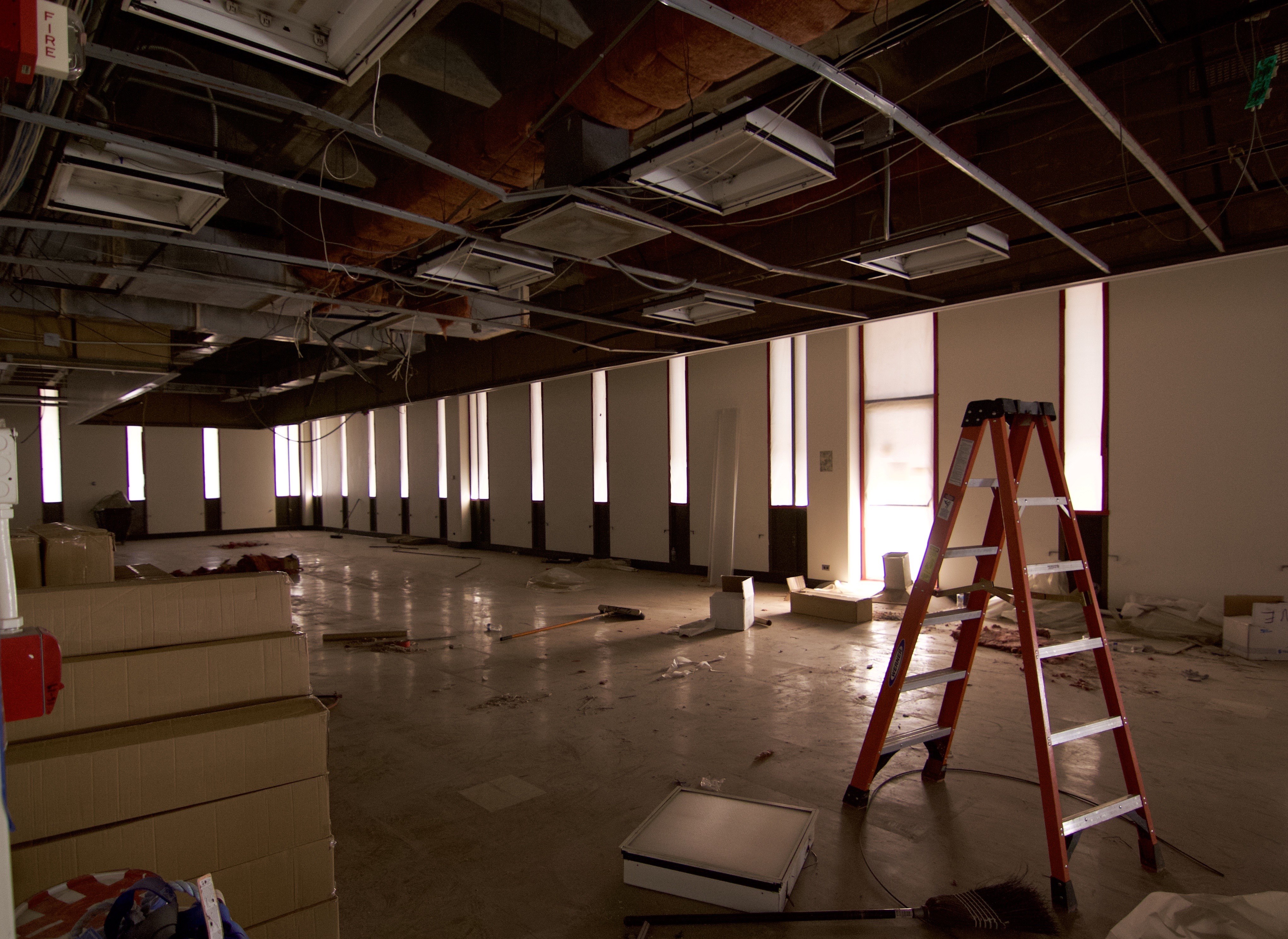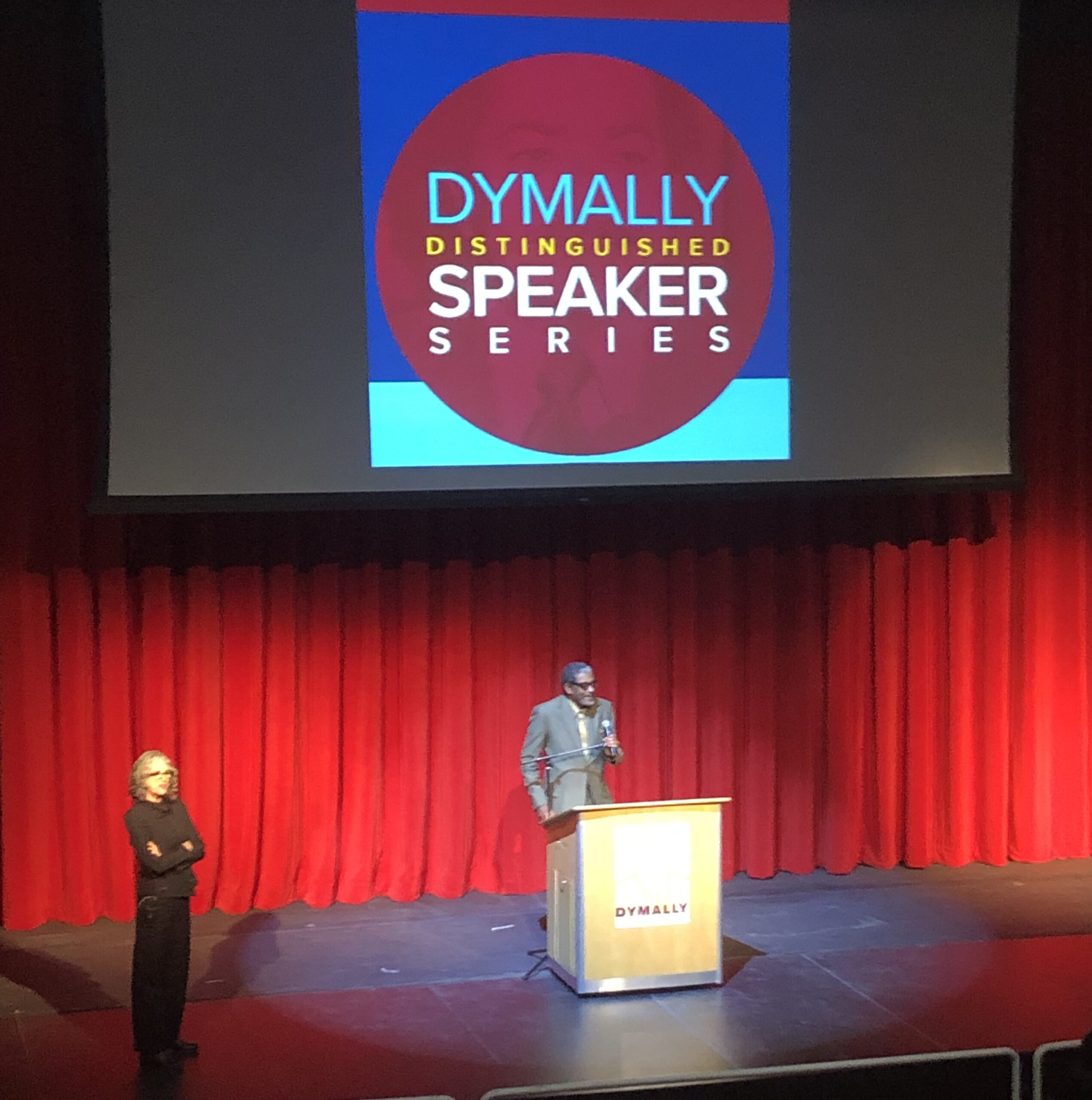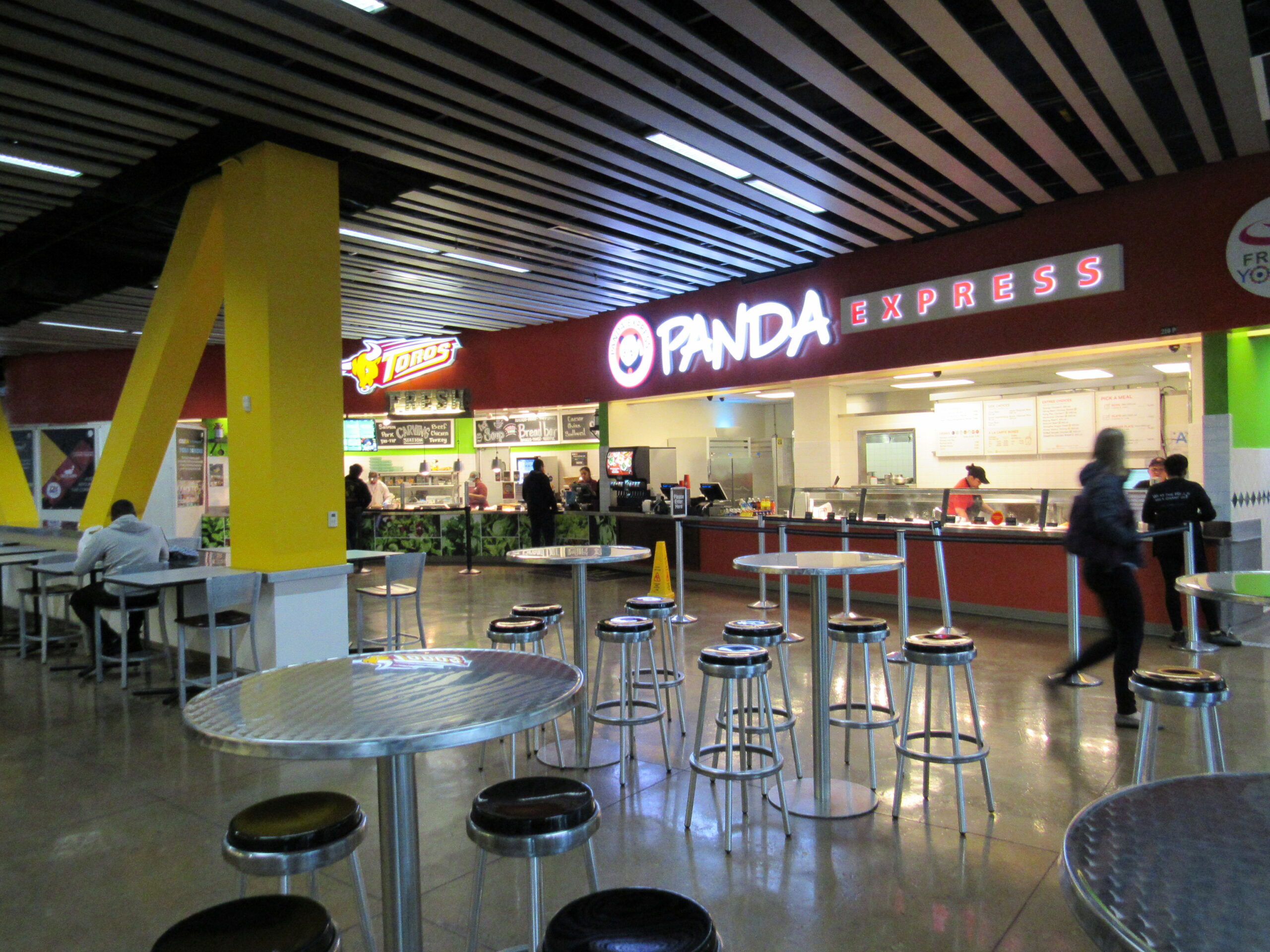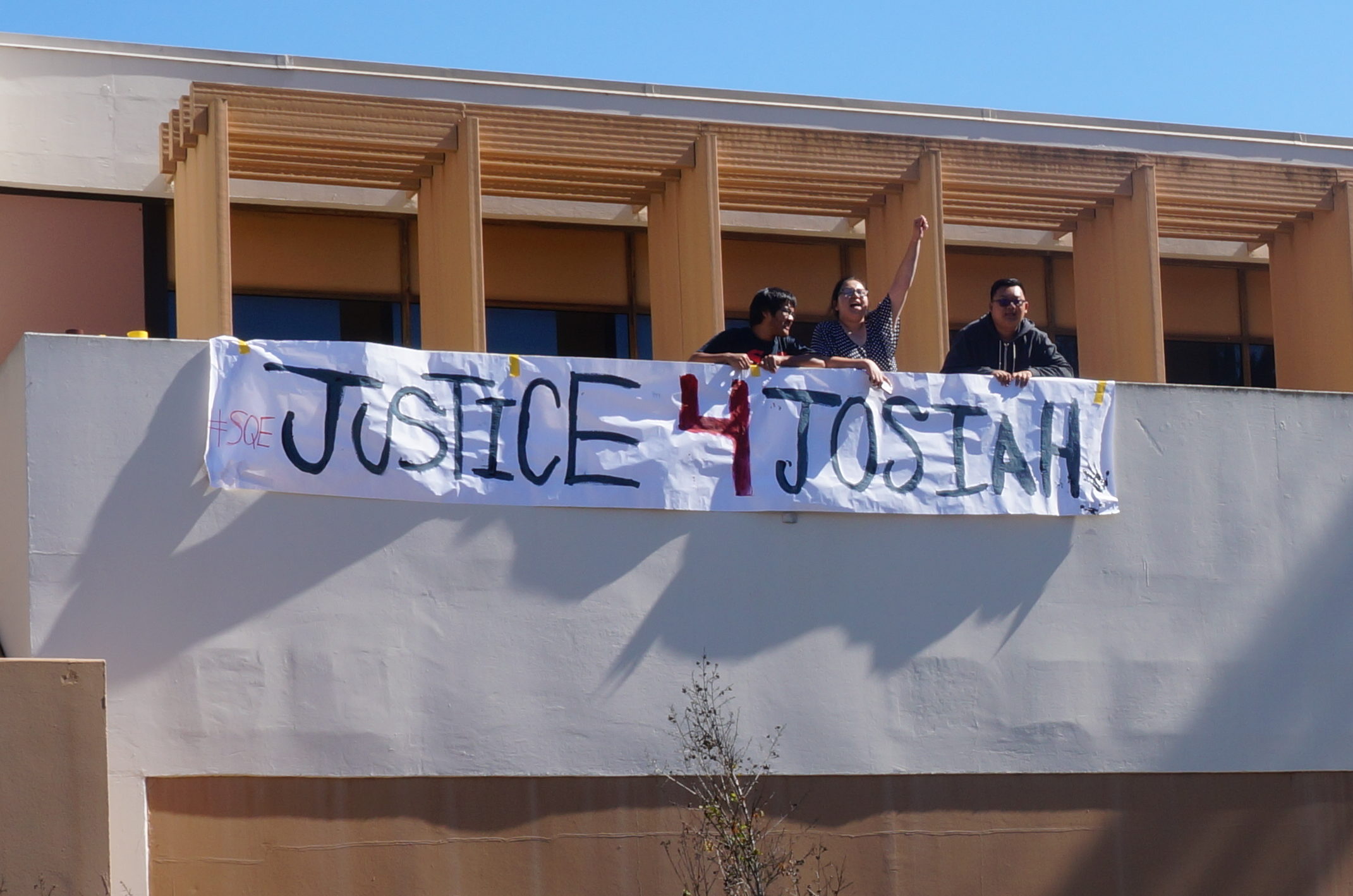By Bria Overs
Editor-in-Chief
If you haven’t become accustomed to the sounds and sight of new construction on campus quite yet, too bad. Some part of the campus will be under constant construction until at least fall 2021, if not longer, and there will be a lot of bodies and programs moving during that time.
That was one of the takeaways from a town hall forum held in early November, as several members from university administration shared the details of its ongoing and planned construction over the next few years.
At this time, there are three “capital projects confirmed,” said Naomi Goodwin, CSUDH vice president of Administration and Finance. Those projects are new student housing, the Science and Innovation building and the Innovation and Instruction building.
With that construction, some existing buildings will be demolished, meaning some classrooms, offices, departments and student service programs will be moved to other buildings on campus. While acknowledging the impending logistical challenges for the campus community, Dr. Thomas Parham said at the town hall that it will all ultimately be worth it.
“Those are game changers,” he said. “They will improve our instructional capacity and they will entirely change the aesthetic ambiance of the campus…What I’m asking for as your president is for you to look at this in a way of dreaming of what’s possible, [and] thank folks for trying to dream along with you,” Parham said.
The expected completion date for the phase three student housing project is fall 2020 with the goal of adding 600 beds, which would give the Pueblo Dominguez student village about 1,250.
The $82 million Science and Innovation Building, which began construction last year is scheduled to be finished by spring 2020, with an official opening date in the fall. The Innovation and Instruction building completion date is fall 2021.
But, Innovation and Instruction has its own multi-phased path to completion. Phase one includes the demolition of the Small College Complex in March 2019, leading to the loss of 18 classrooms. The loss of classrooms and offices, along with the goal of creating centralized hubs, means many programs and departments are expected to relocate to the Leo F. Cain library, the Social and Behavioral Sciences building, Welch Hall and other locations.
Most, if not all of the student services on campus are planned to move to the third and fourth floor of the library to become the “Student Success Hub.” The big move occurs on April 5-7, 2019.
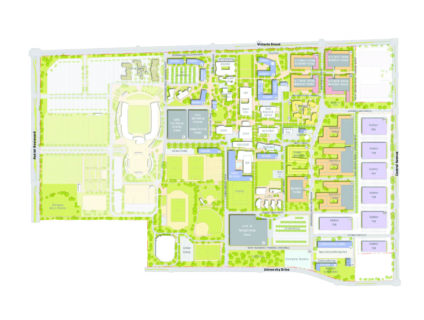
The hub includes the Career Center, Upward Bound, TRiO SSS, GEAR UP, the Male Success Alliance, ETE, Multicultural Affairs, the Women’s Resource Center (WRC), EOP, the Innovation Incubator
Moving into the fourth floor and joining current residents, PEGS and the McNair Scholars office, are CISE, Interdisciplinary Studies/Labor Studies/Program for Adult College Education and the Dymally Institute.
To accommodate the needs of these student services, the third floor plans to have new meeting spaces for one-on-ones and adjunct faculty. And, a new computer lab, student lounge area, conference space, and three meeting spaces are expected to be added to the fourth floor.
Additionally, current SCC occupant and Sexual Assault Advocate, Mayra Romo, will move to the Student Health Center. While the Passport and LiveScan offices are moving to South Academy Complex 2; ROTC and the University Parking Department to temporary units on campus; and, Risk Management/Environmental Health and Occupational Safety to Facilities Services/the Physical Plant.
Center for Service-Learning, Internships and Civic Engagement (SLICE), along with the University Foundation, Payroll, and Pre- and Post Award is moving to Welch Hall.
Phase two focuses on the Science and Innovation building. The plan the university has is to complete the building by spring 2020, which gives CSUDH 30 new labs to work in but no new classrooms.
Relocation of the NSM inhabitants into the Science and Innovation building takes place after the completion of the Science and Innovation. The departments relocating are biology, chemistry, physics, and CISE/CSI3.
After the move, renovation of the NSM begins and “backfill” of the space thereafter. The backfill includes making space for classrooms, adjunct faculty, and student clubs; keeping the computer science department together; creating growth space for the Mathematics and Physics Departments. The overall goal is to create a Science and Innovation Hub by fall 2021.
“This is a critical component from my perspective,” Goodwin said. “We must renovate this building and really create this science hub. It’s something that we’ve said from the onset — from the feasibility study stage for the new science building — that this is our goal to create a science hub. So, that will be very important as we move forward.”
Phase three is the completion of the Innovation and Instruction Building in fall 2021. This is where CSUDH gets its classrooms back, 17 to be exact, almost bringing the campus back to the original amount of classes it had from before the demolition of the SCC.
From there, CBAPP, along with other programs, move to the Innovation and Instruction building the same semester.
According to the town hall presentation, the overall results of this “long-term migration” are the creation of the science hub, improving the identity of the College of Education, moving toward the demolition of all temporary buildings and structures, and finding more opportunity space for offices and classrooms.
Other than the major capital projects, major renovations are planned to happen throughout this time.
The north side of the library is expected to be seismically retrofitted by the end of this semester to accommodate and create a safe space for the incoming Student Success Hub. The LaCorte Recital Hall is “just about finished,” Goodwin said. And a new and expanded chiller is planned to ensure air conditioning for the new buildings.
The Communications Department lab is moving from its current location in the Field House to a new one in the third floor of the library.
The university pool and theatre should receive an “overhaul,” Goodwin said, with new rigging equipment for the theatre. And, the locker rooms in the gymnasium can expect a renovation.
“We also have these other priority projects,” Goodwin said. “And I want to let everybody know that we haven’t forgotten about them. We will continue to be a key priority for the campus.”
Other projects include NSM seismic retrofitting and renovation, the same applies to SBS. Research for phase four of the student housing project shall begin, as will exploration into a location for a future parking structure. The last project at this time is the University Village.
